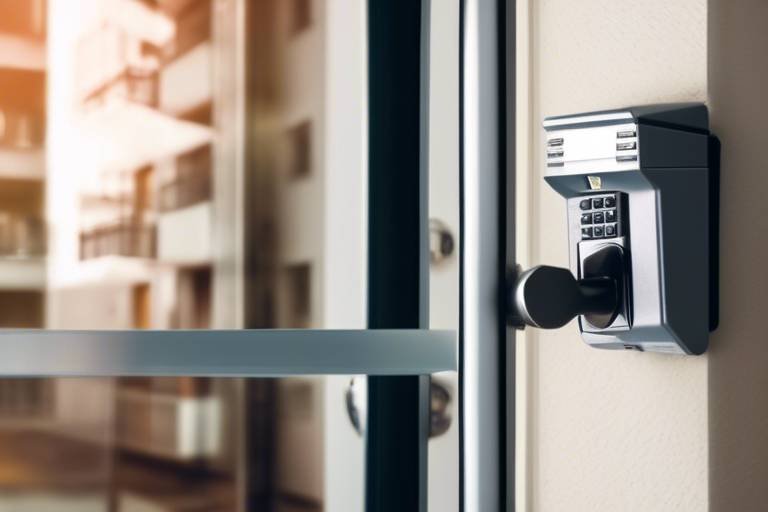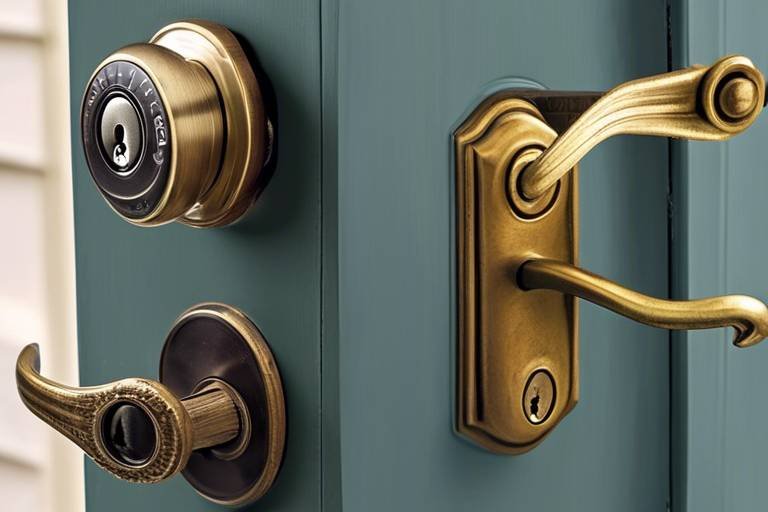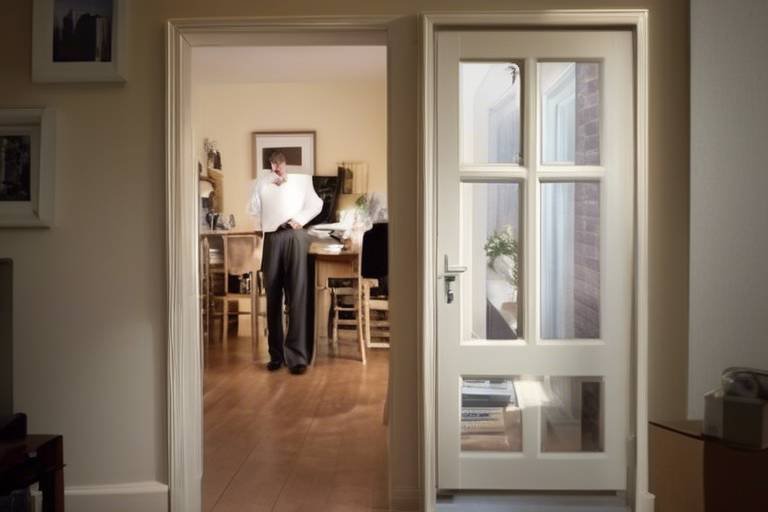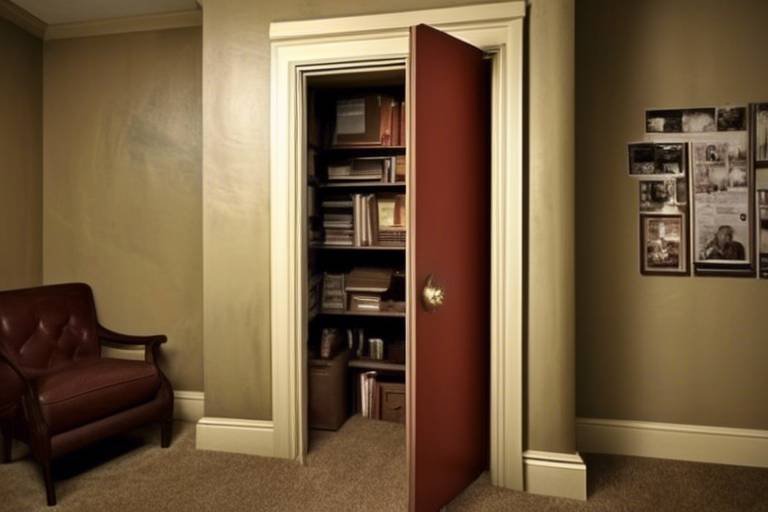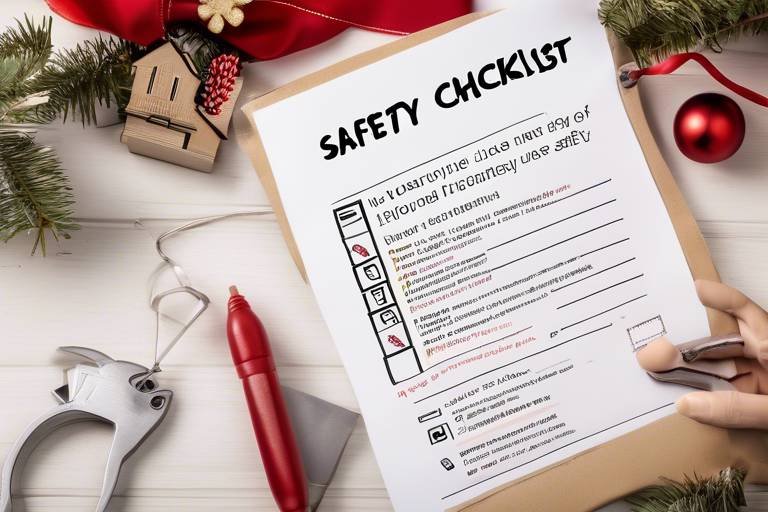Baby-Proofing Your Kitchen – Things to Consider
When it comes to keeping our little ones safe, the kitchen can be one of the most challenging areas in our homes. It’s a bustling hub of activity, filled with enticing smells, shiny appliances, and, unfortunately, a host of potential dangers. From sharp knives to hot stoves, the kitchen is a treasure trove of hazards just waiting for curious hands to explore. So, how can we transform this space into a safe haven for our babies and toddlers? Let’s dive into some essential strategies for baby-proofing your kitchen and ensuring that your culinary adventures don’t come at the cost of safety.
The first step to effective baby-proofing is understanding what dangers lurk in your kitchen. It’s not just about keeping your little ones away from the stove; it’s about creating an environment where they can explore safely. Here are some common kitchen hazards to consider:
- Sharp Objects: Knives, scissors, and even forks can pose serious risks if left within reach.
- Hot Surfaces: Ovens, stovetops, and even countertops can reach temperatures that can cause burns.
- Toxic Substances: Cleaning supplies, dish soap, and other chemicals should be stored safely out of reach.
Recognizing these hazards is crucial in developing a comprehensive safety plan for your kitchen. Remember, little ones are naturally curious, and their explorations can lead to accidents if precautions aren’t taken.
One of the most effective ways to keep your child safe in the kitchen is by using safety gates and barriers. These physical boundaries can restrict access to dangerous areas, allowing you to cook and move around without constantly worrying about where your little one is. But not all gates are created equal, so let’s explore the best types and their placement for maximum effectiveness.
When it comes to safety gates, you have a few options. Pressure-mounted gates are easy to install and remove, making them a popular choice for many families. However, if you need a more secure option, hardware-mounted gates are bolted into the wall and provide a sturdier barrier. Consider your kitchen layout and the areas you want to restrict access to when making your choice.
It’s essential to choose a gate that is the right height and width. A gate that’s too short may be easily climbed over, while one that’s too wide may not fit securely in your space. To avoid accidents, measure the area where you plan to install the gate and look for options that meet your specifications. A good rule of thumb is to select a gate that is at least 30 inches tall.
Proper installation of your safety gate is crucial. Follow the manufacturer’s instructions carefully, and consider using a level to ensure the gate is straight. Here’s a quick step-by-step guide:
- Measure the opening where you’ll install the gate.
- Mark the appropriate locations for mounting brackets.
- Secure the brackets according to the instructions.
- Attach the gate and check for stability.
By taking the time to install your safety gate correctly, you can prevent accidents and keep your child safe.
Now that we’ve covered gates, let’s talk about securing cabinets. Many kitchens have cabinets filled with sharp objects and toxic materials, making it essential to use locks and latches. From simple adhesive locks to more complex latching mechanisms, there are plenty of options available to suit your needs. Make sure to install these locks on all lower cabinets to keep your child from accessing harmful items.
Kitchen appliances can be another source of danger for young children. It’s important to secure items like stoves, dishwashers, and refrigerators to minimize hazards. For instance, consider using stove knob covers to prevent little hands from turning on burners. These simple devices can provide peace of mind and significantly reduce the risk of burns.
Protecting stove knobs is vital to prevent accidental burns. These covers are easy to install and can be removed by adults when necessary. By using stove knob covers, you can keep curious toddlers from turning on the stove while you’re busy cooking.
Storing cleaning supplies and other hazardous materials safely is crucial. Always keep these items in locked cabinets or on high shelves that are out of reach. Consider using child-proof locks on cabinets that store these items to ensure they remain secure.
Finally, designing a kitchen with children in mind can enhance safety and functionality. Think about incorporating features like rounded edges on countertops, slip-resistant flooring, and accessible storage for kids’ items. A child-friendly layout not only promotes safety but also encourages children to be involved in the cooking process, fostering a love for food and family time.
Q: What is the best way to baby-proof my kitchen?
A: Start by identifying hazards, installing safety gates, securing cabinets, and using stove knob covers. A combination of these strategies will create a safer environment.
Q: At what age should I start baby-proofing my kitchen?
A: It’s best to start baby-proofing as soon as your child begins to crawl or walk, typically around 6 to 12 months old.
Q: Are there any specific products you recommend for kitchen safety?
A: Look for high-quality safety gates, cabinet locks, and stove knob covers. Always read reviews and choose products that meet safety standards.

Understanding Kitchen Hazards
When it comes to baby-proofing your home, the kitchen can be a minefield of potential hazards. It's not just a place for cooking; it's a treasure trove of dangers waiting to catch the unwary. Imagine your curious little one, exploring every nook and cranny, reaching for that shiny pot or the mysterious bottle under the sink. Understanding these risks is the first step toward creating a safe haven for your children.
One of the primary hazards in the kitchen is sharp objects. Knives, scissors, and even forks can pose a significant risk to little fingers. It's essential to keep these items out of reach or secured in a locked drawer. You might think a simple drawer lock is enough, but remember, kids are clever! They might find a way to wiggle them open. Consider investing in high-quality locks that can withstand a toddler's determination.
Another major concern is hot surfaces. Stoves, ovens, and even countertops can reach temperatures that can cause severe burns. Just think about it—one moment you're cooking dinner, and the next, your child is reaching for the stove knobs. That's why it's crucial to use stove knob covers and to keep pot handles turned inward to minimize the risk of accidental burns.
Additionally, we can't overlook the danger of toxic substances. Many cleaning supplies and chemicals are stored under the sink or in cabinets, often within reach of tiny hands. It's vital to store these items in locked cabinets or high shelves. You wouldn’t want your little explorer to mistake a bottle of bleach for a fun drink, would you?
Here's a quick overview of some common kitchen hazards:
- Sharp objects (knives, scissors)
- Hot surfaces (stoves, ovens)
- Toxic substances (cleaning supplies, chemicals)
- Small objects (coins, batteries) that can be swallowed
In conclusion, understanding kitchen hazards is about more than just recognizing potential dangers; it’s about taking proactive steps to eliminate them. With a little foresight and preparation, you can transform your kitchen into a safe environment where your children can explore without fear. After all, a safe kitchen is not just about keeping the little ones out; it's about making it a welcoming space for the entire family.

Safety Gates and Barriers
When it comes to baby-proofing your kitchen, one of the most effective strategies is the installation of safety gates and barriers. These handy tools act as your first line of defense, keeping your little explorers away from potentially hazardous areas like the stove, dishwasher, and sharp utensils. Imagine your kitchen as a bustling city, full of exciting yet dangerous roads. Safety gates serve as the traffic lights, guiding your child safely through without leading them into harm’s way.
Choosing the right safety gate is more than just a matter of preference; it’s about ensuring your child’s safety. There are various types of safety gates available, including pressure-mounted and hardware-mounted options. Pressure-mounted gates are easy to install and can be moved around, making them ideal for temporary barriers. On the other hand, hardware-mounted gates are typically more secure and are best for high-traffic areas where a sturdy barrier is essential. Think of them as the difference between a flexible speed bump and a solid brick wall—both serve a purpose, but one is definitely more reliable!
Not all safety gates are created equal, and selecting the right one can feel like finding a needle in a haystack. To make this process easier, consider the following factors:
- Material: Gates can be made from wood, metal, or plastic. Metal gates are often more durable, while wooden gates can blend better with your home decor.
- Height: A good safety gate should be at least 30 inches tall to prevent your little one from climbing over.
- Width: Measure the space where you plan to install the gate to ensure a proper fit. Some gates come with extensions for wider openings.
When selecting a safety gate, the importance of height and width cannot be overstated. You want a gate that is tall enough to prevent your child from climbing over, but also wide enough to fit snugly in your kitchen’s entryways. To determine the right size, measure the area where you plan to install the gate and compare it with the specifications provided by the manufacturer. Remember, a gate that’s too short is like a fence that’s too low—it's not going to keep anything in or out!
Proper installation is crucial for ensuring the effectiveness of your safety gates. Here’s a simple step-by-step guide to help you:
- Start by measuring the opening where you want to install the gate.
- Follow the manufacturer's instructions for assembling the gate.
- If you are using a pressure-mounted gate, make sure it is tightly secured against the walls.
- For hardware-mounted gates, drill the necessary holes and secure the gate with screws, ensuring it is firmly in place.
- Test the gate by applying pressure to make sure it doesn’t budge.
By following these steps, you can feel confident that your safety gates will stand the test of time and keep your kitchen a safe haven for your little ones.
In conclusion, investing in safety gates and barriers is a crucial step in creating a secure kitchen environment. Not only do they provide peace of mind, but they also allow your child to explore their surroundings safely. So, take the time to choose and install the right gates, because a little precaution goes a long way in ensuring a happy and safe home!
1. At what age should I start using safety gates?
It’s best to start using safety gates as soon as your baby begins to crawl, which is typically around 6 to 10 months old.
2. Can I use safety gates at the top of stairs?
Yes, but make sure to use hardware-mounted gates for added security, as they are more stable and less likely to fall over.
3. How do I know if a safety gate is safe?
Look for safety gates that meet the current safety standards, and check for features like a locking mechanism and sturdy construction.
4. Are there any safety gates that can be used outdoors?
Yes, there are gates specifically designed for outdoor use, but ensure they are weather-resistant and durable.

Choosing the Right Safety Gate
When it comes to baby-proofing your kitchen, one of the most crucial steps is selecting the right safety gate. Not all gates are created equal, and choosing the wrong one can lead to potential hazards instead of preventing them. So, how do you make the right choice? First and foremost, consider the location where you plan to install the gate. Is it at the entrance to the kitchen or perhaps at a staircase leading to a higher level? The type of gate you need will differ based on its intended use.
There are generally two main types of safety gates: pressure-mounted and hardware-mounted. Pressure-mounted gates are typically easier to install and can be moved around easily without any tools. They work well for doorways and areas where you don’t need a permanent solution. On the other hand, hardware-mounted gates are more secure and are ideal for top or bottom of stairs, as they are bolted to the wall. This extra security is essential in preventing any accidental falls.
Now, let’s dive into the specifics. When choosing a safety gate, consider the height and width of the gate. A gate should be tall enough to prevent your little one from climbing over it. The general recommendation is that the gate should be at least 30 inches high. Additionally, ensure the gate is wide enough to fit the space you have without leaving any gaps that a child could squeeze through. A gap of even a few inches can be an invitation for a toddler to explore dangerous areas.
Another important factor is the material of the gate. Gates made from sturdy materials like wood or metal tend to be more durable than those made from plastic. However, you should also consider the design. A gate with a simple opening mechanism is essential. Look for one that can be operated with one hand, as you may often find yourself holding a baby in the other arm. Some gates even come with a double-locking mechanism for added security, which can be a lifesaver in keeping your curious toddler at bay.
Lastly, always check for safety certifications. Look for gates that meet the standards set by the Consumer Product Safety Commission (CPSC). This ensures that the gate has been tested for safety and reliability. Remember, the goal is to create a safe environment for your child, so investing in a quality gate is worth every penny.
In summary, choosing the right safety gate involves considering its location, type, height, width, material, and safety certifications. By keeping these factors in mind, you can ensure that your kitchen remains a safe haven for your little ones, allowing them to explore their world without unnecessary risks.
- What is the best type of safety gate for the kitchen? For most kitchen entrances, a pressure-mounted gate is sufficient. However, if you need a gate at the top of the stairs, opt for a hardware-mounted gate for added safety.
- How high should a safety gate be? A safety gate should be at least 30 inches high to effectively prevent toddlers from climbing over.
- Can I use a safety gate for pets as well? Yes, many safety gates are designed to keep both children and pets safe. Just ensure the gate is tall enough for your pet's breed.
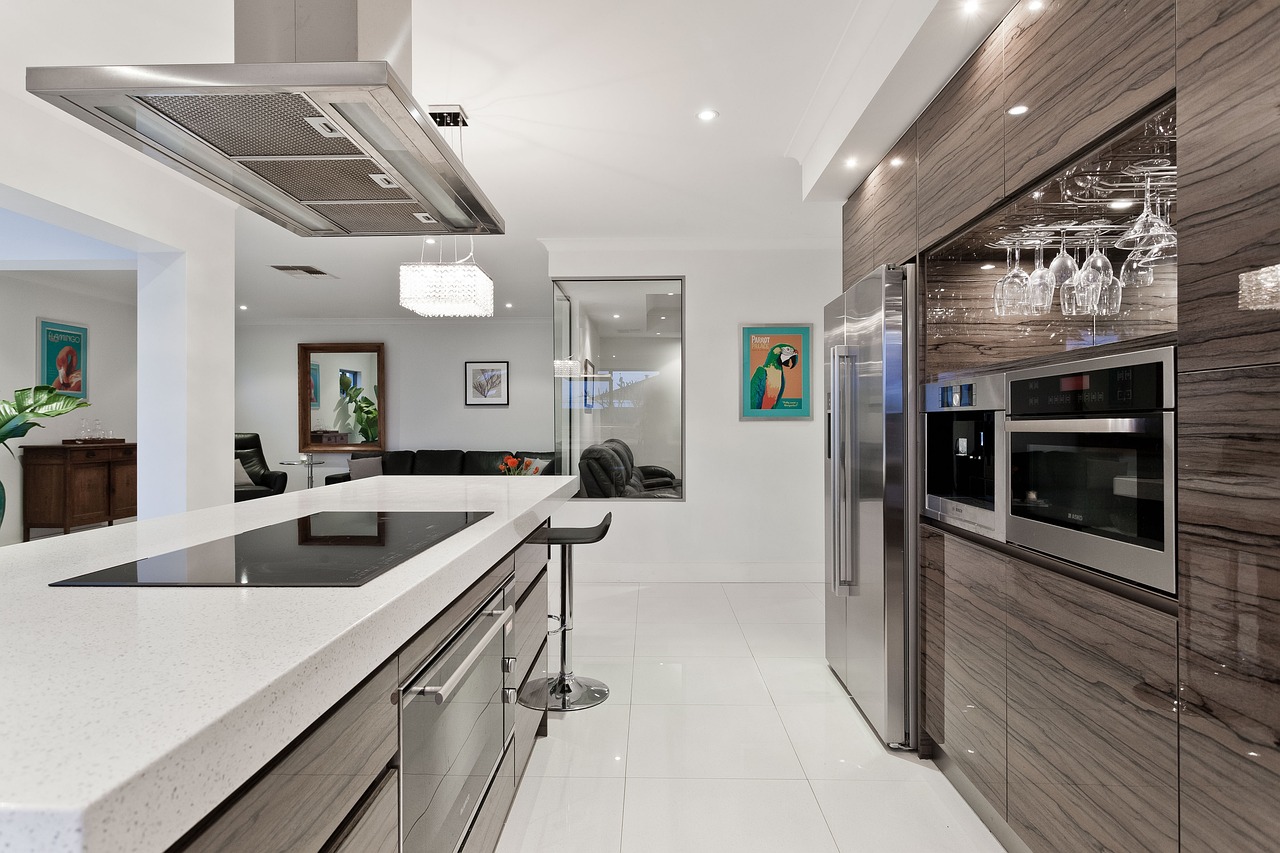
Height and Width Considerations
When it comes to choosing the right safety gate for your kitchen, height and width are crucial factors that can make all the difference in keeping your little ones safe. Imagine a curious toddler, their eyes sparkling with mischief, trying to climb over a gate that’s too short. It's a scenario many parents dread, and it's why careful measurement and selection are essential.
First, let's talk about height. A safety gate should be tall enough to deter even the most adventurous climbers. Typically, a gate that stands at least 30 inches high is recommended for toddlers. However, if you have a particularly agile child, you might want to consider gates that are even taller. Remember, the goal is to create a barrier that not only restricts access but also gives you peace of mind.
Next up is width. Not all doorways or openings are created equal, and that’s where width considerations come into play. You’ll need to measure the space where you plan to install the gate. Many gates come with adjustable widths, but it’s vital to ensure it fits snugly without leaving any gaps that a child could squeeze through. A gap of just a few inches can be an invitation for a little explorer to slip past the gate!
Here’s a quick tip: when measuring, take into account any baseboards or irregularities in your walls. These can affect how the gate sits and its overall effectiveness. If you find yourself in need of a custom solution, many manufacturers offer gates that can be tailored to your specific dimensions. This option ensures that you’re getting a gate that fits perfectly, providing a secure barrier against kitchen hazards.
In summary, when selecting a safety gate, consider the following:
- Height: Aim for at least 30 inches, or higher for more active toddlers.
- Width: Measure your opening carefully to ensure a snug fit.
- Adjustability: Look for gates that can be adjusted to fit various widths.
- Custom Options: Don’t hesitate to explore custom gate solutions if standard sizes don’t fit your needs.
By taking the time to consider these height and width factors, you can significantly enhance the safety of your kitchen and create a secure environment for your little ones to explore. Remember, a well-chosen safety gate is not just a barrier; it’s a safeguard that allows you to enjoy cooking while keeping your child safe from potential dangers.

Installation Tips
When it comes to baby-proofing your kitchen, installing safety gates is a crucial step that requires careful attention to detail. Proper installation not only ensures that the gate functions as intended but also provides peace of mind for parents. First and foremost, always read the manufacturer's instructions thoroughly before you start. Each gate may have specific requirements for installation that can vary significantly.
One of the most important aspects to consider is the location where you plan to install the gate. Ideally, it should be placed at the entrance of the kitchen or in areas where hazardous materials are stored. Make sure the gate is mounted securely to a wall or door frame. For pressure-mounted gates, ensure that the pressure is evenly distributed to avoid any slipping or accidents. If you’re using a hardware-mounted gate, be sure to drill the necessary holes carefully to avoid damaging your walls.
Another tip is to measure the width of the opening accurately. A common mistake is to assume that all gates fit all spaces. A gate that is too wide may not provide the necessary security, while one that is too narrow could easily be climbed over or squeezed through. It’s wise to double-check your measurements and consider the height of the gate as well. A gate that is too low may not deter a curious toddler, so aim for a height of at least 30 inches.
Additionally, the installation process can be simplified by having a second pair of hands. Having someone assist you can make aligning the gate and ensuring that it’s level much easier. Once the gate is installed, test it by giving it a gentle push to ensure that it is secure. It’s also a good idea to periodically check the gate after installation to confirm that it remains tight and secure over time.
Finally, remember to consider the design and functionality of the gate. Some gates come with one-handed release mechanisms, which can be particularly useful for parents juggling a baby in one arm. Choose a gate that not only meets safety standards but also fits seamlessly into your kitchen's decor.
- How do I know if a safety gate is suitable for my kitchen? Look for gates that are specifically labeled for use in kitchens and are made from sturdy materials. Ensure they meet safety standards set by regulatory bodies.
- Can I use a pressure-mounted gate at the top of the stairs? No, pressure-mounted gates are not recommended for the top of stairs. Always use a hardware-mounted gate in that location for maximum safety.
- How often should I check the installation of safety gates? It's wise to check your safety gates monthly, especially after any major activity in the kitchen, to ensure they remain secure and functional.

Cabinet Locks and Latches
When it comes to baby-proofing your kitchen, securing cabinets is one of the most critical steps you can take. Young children are naturally curious and often explore their surroundings by opening cabinets and drawers. Unfortunately, this innocent curiosity can lead to dangerous situations, especially if they gain access to sharp objects, cleaning supplies, or other harmful materials. Therefore, investing in effective is essential for keeping your little ones safe.
There are several types of cabinet locks and latches available on the market, each with its own unique features and benefits. For instance, magnetic locks use a magnet to keep the cabinet doors securely closed, while others may rely on sliding mechanisms or simple childproof latches. The choice of which type to use often depends on your specific needs and the layout of your kitchen. It's important to consider how easy or difficult each option is for adults to operate while remaining secure against inquisitive toddlers.
One popular option is the magnetic cabinet lock, which is not only effective but also invisible from the outside, maintaining the aesthetic of your kitchen. These locks require a special key to open, making it nearly impossible for little hands to access the contents inside. Another option is the spring-loaded latch, which can be easily installed on most cabinet doors. While these are simple to use for adults, they provide a strong barrier against curious children.
When selecting cabinet locks, keep in mind the age and developmental stage of your child. Younger toddlers are often more determined and resourceful, so you may want to invest in more complex locking mechanisms. On the other hand, for slightly older children who are learning to explore but may not yet be strong enough to manipulate certain locks, simpler solutions may suffice. It's all about finding that perfect balance between accessibility for adults and security for children.
Additionally, proper installation of cabinet locks is crucial for their effectiveness. Be sure to follow the manufacturer's instructions carefully, as improper installation can lead to locks that fail to function as intended. If you're unsure about the installation process, consider seeking help from a professional or a handy friend. Remember, the goal is to create a secure environment where your child can explore safely.
In conclusion, investing in quality cabinet locks and latches is a small but significant step in baby-proofing your kitchen. By taking the time to assess your options and choose the right types of locks, you can create a safer environment for your little ones, allowing them to explore their surroundings without the constant worry of encountering dangerous items. Your kitchen can remain a hub of family activity while also being a safe space for your children to learn and grow.
- What type of cabinet locks are best for kitchens? Magnetic locks and spring-loaded latches are popular choices due to their effectiveness and ease of use.
- How do I install cabinet locks? Follow the manufacturer's instructions carefully, and consider professional help if you're unsure about the process.
- Are cabinet locks easy for adults to operate? Most cabinet locks are designed to be simple for adults while remaining secure against children.
- Can I use cabinet locks on all types of cabinets? Yes, most cabinet locks can be adapted for various cabinet styles, but always check compatibility before purchasing.

Appliance Safety Measures
When it comes to baby-proofing your kitchen, one of the most critical areas to focus on is the appliances. These devices, while incredibly useful, can pose significant hazards to curious little hands and feet. From hot surfaces to sharp edges, understanding how to secure your appliances is essential for creating a safe environment. Imagine your kitchen as a bustling factory where every machine is a potential risk; it’s crucial to manage that risk effectively.
First things first, let’s talk about the stove. This is often the heart of the kitchen, but it can also be a source of danger. Accidental burns from hot pots and pans or even from the stove knobs themselves can happen in the blink of an eye. To mitigate these risks, one effective strategy is to use stove knob covers. These simple yet effective devices are designed to fit over the knobs, preventing little ones from turning them on and potentially causing a fire or burn. It's like putting a safety lock on the door of a treasure chest; it keeps the curious pirates at bay!
Next up is the dishwasher. While it might seem innocuous, dishwashers can harbor sharp knives and other dangerous utensils. Always ensure that the dishwasher is closed when not in use, and consider using a child lock if your model allows it. This is akin to having a safety net under a high-wire act; it provides an extra layer of protection against accidents.
Refrigerators are another appliance that requires attention. Not only do they contain food, but they can also hold cleaning supplies or medications that should be out of reach. One effective solution is to install a refrigerator lock. This is especially useful if your little one is at the age where they love to explore and may try to sneak a snack or, worse, access harmful substances. Think of it as a gatekeeper for your culinary kingdom, ensuring that only those who are meant to enter can do so.
In addition to these specific appliances, it’s crucial to consider the overall layout of your kitchen. Keeping appliances out of reach and ensuring that cords are tucked away can significantly reduce risks. For example, you might want to place the toaster on a high shelf or use cord shorteners to keep electrical cords from dangling where a child could grab them. This is similar to organizing a cluttered desk; a clean, orderly space is inherently safer.
Finally, it’s essential to educate older children about kitchen safety. While it may be impossible to keep a watchful eye on them at all times, teaching them about the dangers of the kitchen can empower them to make safer choices. You might even create a fun game where they identify potential hazards in the kitchen, turning learning into a playful adventure.
In summary, appliance safety measures are pivotal in baby-proofing your kitchen. By taking proactive steps, such as using stove knob covers, securing dishwashers, and locking refrigerators, you can create a safer environment for your little explorers. Remember, a little preparation goes a long way in preventing accidents and ensuring peace of mind for parents and caregivers alike.
- What are the most dangerous appliances in the kitchen for babies? The stove, dishwasher, and refrigerator are often the most hazardous due to hot surfaces, sharp objects, and access to harmful substances.
- How can I make my stove safer for my toddler? Using stove knob covers and ensuring that pots and pans are placed on the back burners can significantly reduce the risk of burns.
- Are there any specific locks for refrigerators? Yes, there are various refrigerator locks available that can help keep curious little hands from accessing the fridge.
- What should I do if my child is old enough to understand kitchen safety? Educate them about the dangers and involve them in identifying hazards to foster a sense of responsibility.
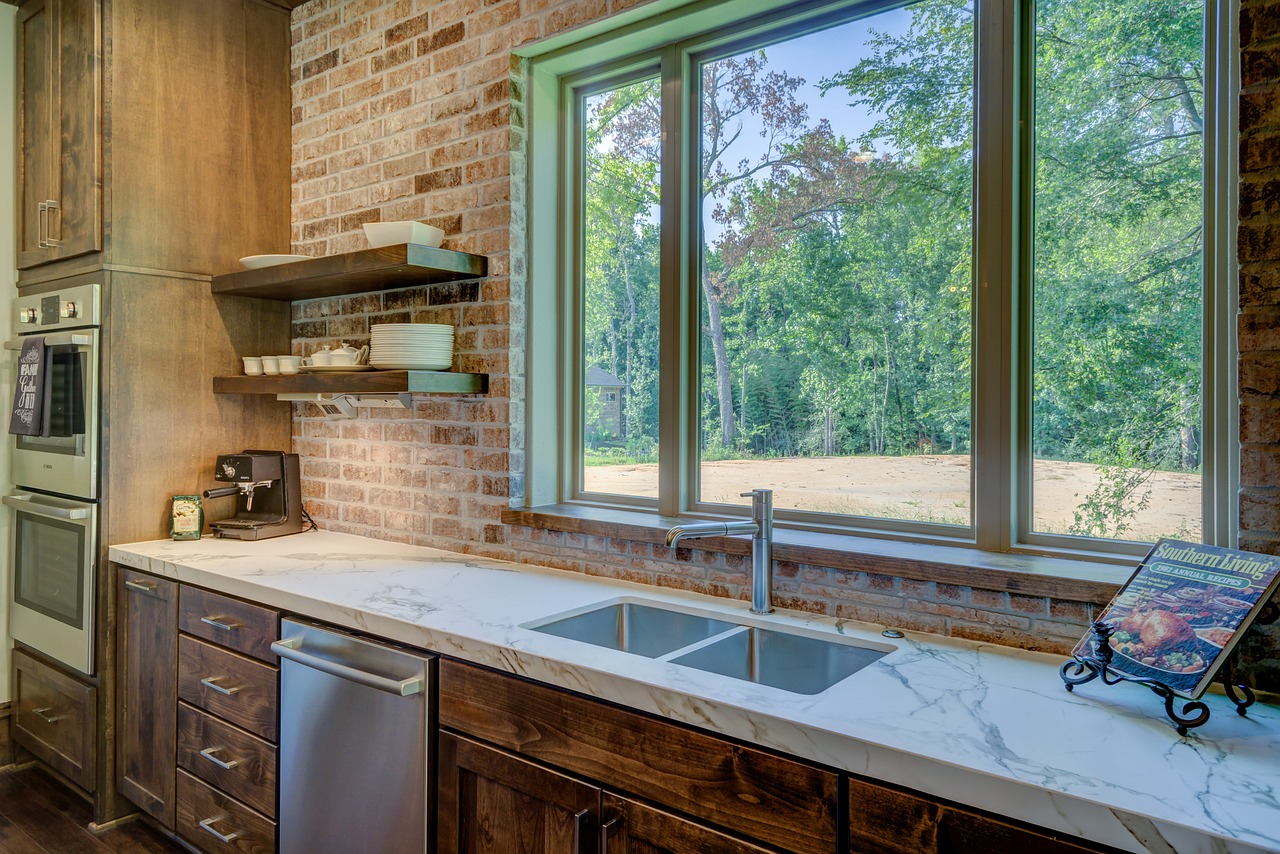
Stove Knob Covers
When it comes to baby-proofing your kitchen, one of the most critical aspects is ensuring that your stove is safe from those curious little hands. are an essential tool in this endeavor. These simple yet effective devices prevent toddlers from turning the knobs and accidentally igniting the burners, which could lead to serious burns or even fires. Just imagine the chaos that could ensue if your little one decides to play chef while you're momentarily distracted!
So, how do these covers work? Typically, stove knob covers are made from durable plastic and fit snugly over the existing knobs, creating a barrier that’s difficult for small fingers to manipulate. They come in various designs, ensuring that you can find a style that matches your kitchen decor without compromising on safety. Many parents find that the peace of mind they gain from using these covers is absolutely priceless, allowing them to cook without the constant worry of their child reaching for the stove.
Here are a few important considerations when choosing stove knob covers:
- Compatibility: Ensure the covers fit your stove knobs securely. Some models are designed specifically for certain brands, while others are more universal.
- Ease of Use: Look for covers that are easy for adults to remove but challenging for children. You don’t want to struggle every time you need to cook!
- Durability: Choose high-quality materials that can withstand wear and tear, especially if you have multiple children or plan to use them for an extended period.
In addition to installing stove knob covers, it’s wise to teach your children about kitchen safety as they grow older. While these covers are a fantastic first line of defense, educating your kids about the dangers of hot surfaces and how to behave safely in the kitchen will help reinforce the importance of being cautious around appliances.
To sum it up, stove knob covers are a small investment that can yield significant safety benefits. They are easy to install, affordable, and can save you from potential accidents. By taking this proactive step, you create a safer environment for your little ones, allowing them to explore their surroundings while minimizing risks. Remember, a safe kitchen is a happy kitchen!
1. Are stove knob covers easy to install?
Yes! Most stove knob covers come with simple instructions and can be installed in just a few minutes without any tools.
2. Can I use stove knob covers on any type of stove?
While many stove knob covers are designed to be universal, it's essential to check the specifications to ensure they fit your specific stove model.
3. How do I clean stove knob covers?
Most covers can be wiped down with a damp cloth and mild soap. Just make sure to remove them before cleaning the stove itself.
4. When should I remove the stove knob covers?
Once your children are old enough to understand kitchen safety and can be trusted around the stove, you may consider removing the covers. However, always assess their maturity and understanding of the risks involved.
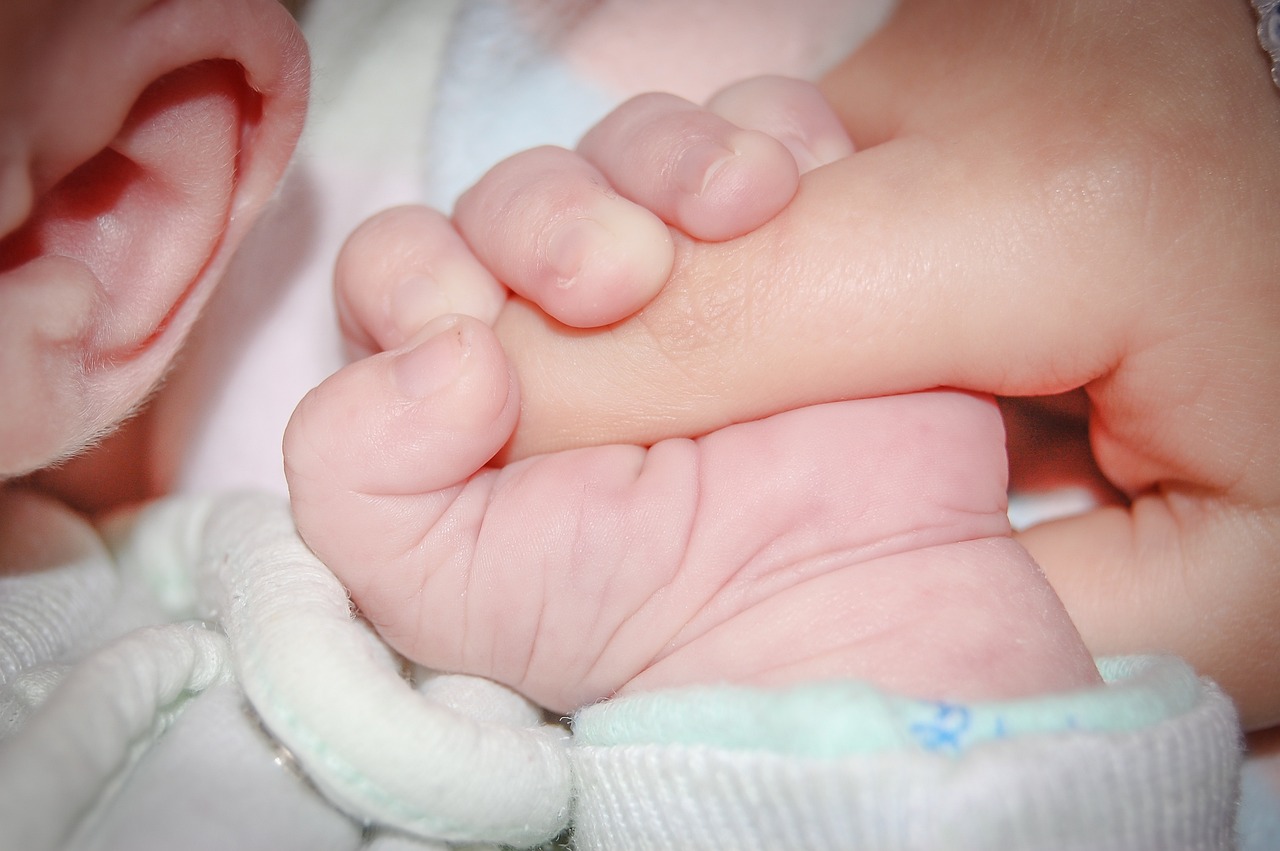
Safe Storage of Hazardous Materials
When it comes to keeping your little ones safe in the kitchen, storing hazardous materials properly is non-negotiable. The kitchen is often a treasure trove of cleaning supplies, sharp objects, and other potentially dangerous items that can pose significant risks to curious toddlers. Imagine a toddler, with their innate curiosity, reaching for a bottle of bleach or a pack of sharp knives—it's a parent's nightmare! Therefore, implementing effective storage solutions is crucial.
First and foremost, it’s essential to identify hazardous materials in your kitchen. These can include cleaning agents, sharp utensils, and even certain food items that might be harmful if ingested. Once you've identified these items, the next step is to ensure they are stored securely. Here are some practical strategies:
- Use Locked Cabinets: Consider installing cabinets that can be locked. This is especially important for cleaning supplies that can cause serious harm if swallowed or inhaled.
- High Shelves: Store hazardous materials on high shelves that are out of reach of little hands. However, be cautious, as children can be surprisingly resourceful!
- Childproof Latches: If locking cabinets is not an option, invest in childproof latches that make it difficult for toddlers to open cabinets. These latches are relatively easy to install and can provide peace of mind.
In addition to securing cabinets, it’s also wise to keep hazardous materials in their original containers. This practice ensures that labels are intact, providing crucial information about the contents and any potential dangers. If you do need to transfer these materials to different containers, make sure they are clearly labeled and child-resistant.
Another aspect to consider is the placement of appliances that may contain hazardous materials, such as dishwashers and ovens. Ensure that these appliances are childproofed and that their cleaning supplies are stored safely away from the reach of children. For instance, if you use dishwasher detergents, opt for those that come in child-resistant packaging and store them securely.
Ultimately, the key to safe storage of hazardous materials lies in being proactive. Regularly assess your kitchen for potential hazards and keep an eye on your child’s development—what was once out of reach may become accessible as they grow. By taking these precautions, you can create a safer kitchen environment where your little ones can explore without the constant worry of encountering dangerous substances.
Q: What types of materials should be considered hazardous in the kitchen?
A: Hazardous materials in the kitchen include cleaning products, sharp utensils, medicines, and certain food items that can be toxic if ingested.
Q: How can I effectively childproof my cabinets?
A: You can childproof cabinets by using childproof latches, installing locks, or placing hazardous materials on high shelves out of reach.
Q: Are there specific containers I should use for storing cleaning supplies?
A: Always keep cleaning supplies in their original containers with labels intact. If transferring to other containers, ensure they are clearly labeled and child-resistant.
Q: How often should I reassess the safety of my kitchen?
A: It’s a good idea to reassess your kitchen regularly, especially as your child grows and becomes more mobile and curious.

Child-Friendly Kitchen Design
Designing a kitchen that is child-friendly is not just about aesthetics; it’s about creating a safe and functional space where families can thrive. Think of your kitchen as the heart of your home, where meals are prepared, and memories are made. However, when you have little ones crawling and exploring, it’s essential to consider how the layout and features can enhance safety while still being practical for adult use.
One of the first things to consider is the layout. A well-organized kitchen can minimize hazards. For instance, keeping frequently used items within easy reach while ensuring that dangerous items are stored out of sight is crucial. You might want to designate a lower cabinet for kids’ dishes and snacks, which allows them to feel included in the kitchen activities without compromising their safety. This way, they can help set the table or grab their snacks without needing to climb or reach for high shelves.
Another vital aspect is the choice of materials. Opt for non-slip flooring to reduce the risk of falls, which can be a common occurrence in busy kitchens. Consider using rounded edges on countertops and tables to minimize injury risks. Additionally, using easy-to-clean surfaces can help you maintain a hygienic environment, especially when little hands are involved in cooking or snacking.
Incorporating storage solutions that are both practical and safe is essential. For example, using drawers with soft-close features can prevent little fingers from getting pinched. You can also install cabinets with child-proof locks for cleaning supplies and other hazardous materials. This not only keeps dangerous items away from curious hands but also promotes a sense of order in your kitchen.
Lighting is another critical factor in a child-friendly kitchen. Adequate lighting ensures that both parents and children can see well while cooking or playing. Consider installing under-cabinet lighting to illuminate workspaces and make it easier to spot any potential hazards. It’s also a good idea to use dimmers to adjust the light levels based on the time of day or activity.
Finally, think about the inclusion of child-friendly appliances. Many modern appliances come with safety features that can be beneficial in a household with young children. For instance, stoves with lockable knobs or dishwashers that require a two-step process to operate can add an extra layer of safety. Additionally, consider appliances that are energy-efficient and easy to use, as they can simplify meal preparation and clean-up, allowing you to spend more quality time with your family.
In conclusion, a child-friendly kitchen design is all about creating a safe, inviting space that fosters family interaction while minimizing risks. By considering layout, materials, storage solutions, lighting, and appliances, you can craft a kitchen that not only looks great but also functions beautifully for everyone, especially the little ones.
- What are some essential features of a child-friendly kitchen? A child-friendly kitchen should have non-slip flooring, rounded edges on countertops, child-proof locks on cabinets, and adequate lighting.
- How can I involve my child in the kitchen safely? Designate a low cabinet for kids’ dishes and snacks, and provide them with safe utensils to use while cooking.
- Are there specific appliances I should consider? Look for appliances with safety features like lockable knobs on stoves and those that require a two-step process to operate.
Frequently Asked Questions
- What are the most common kitchen hazards for babies?
Common kitchen hazards include sharp objects like knives, hot surfaces such as stovetops and ovens, and toxic substances like cleaning supplies. It’s essential to identify these dangers to effectively baby-proof your kitchen.
- How can I effectively use safety gates in my kitchen?
Safety gates can restrict access to hazardous areas. Choose gates that are pressure-mounted or hardware-mounted, depending on your kitchen layout. Ensure they are installed correctly to prevent any accidents.
- What should I consider when choosing a safety gate?
When selecting a safety gate, consider the height and width to prevent climbing or squeezing through. Measure the space where you plan to install the gate to ensure a snug fit, and opt for a gate that meets safety standards.
- Are there specific locks for kitchen cabinets?
Yes! There are various types of cabinet locks and latches available. Magnetic locks, sliding locks, and adhesive locks are popular options that can keep harmful items out of reach.
- How can I secure my stove knobs?
Using stove knob covers is a great way to prevent accidental burns. These covers fit over the knobs, making it difficult for little hands to turn them, thereby enhancing kitchen safety.
- What is the best way to store cleaning supplies?
Always store cleaning supplies in locked cabinets or high shelves that are out of reach of children. Consider using child-proof locks to ensure these hazardous materials are secure.
- Can I design a child-friendly kitchen?
Absolutely! A child-friendly kitchen can include features like rounded edges on countertops, accessible storage for safe items, and a layout that keeps hazardous areas out of reach. It’s all about creating a safe and functional environment for your family.


